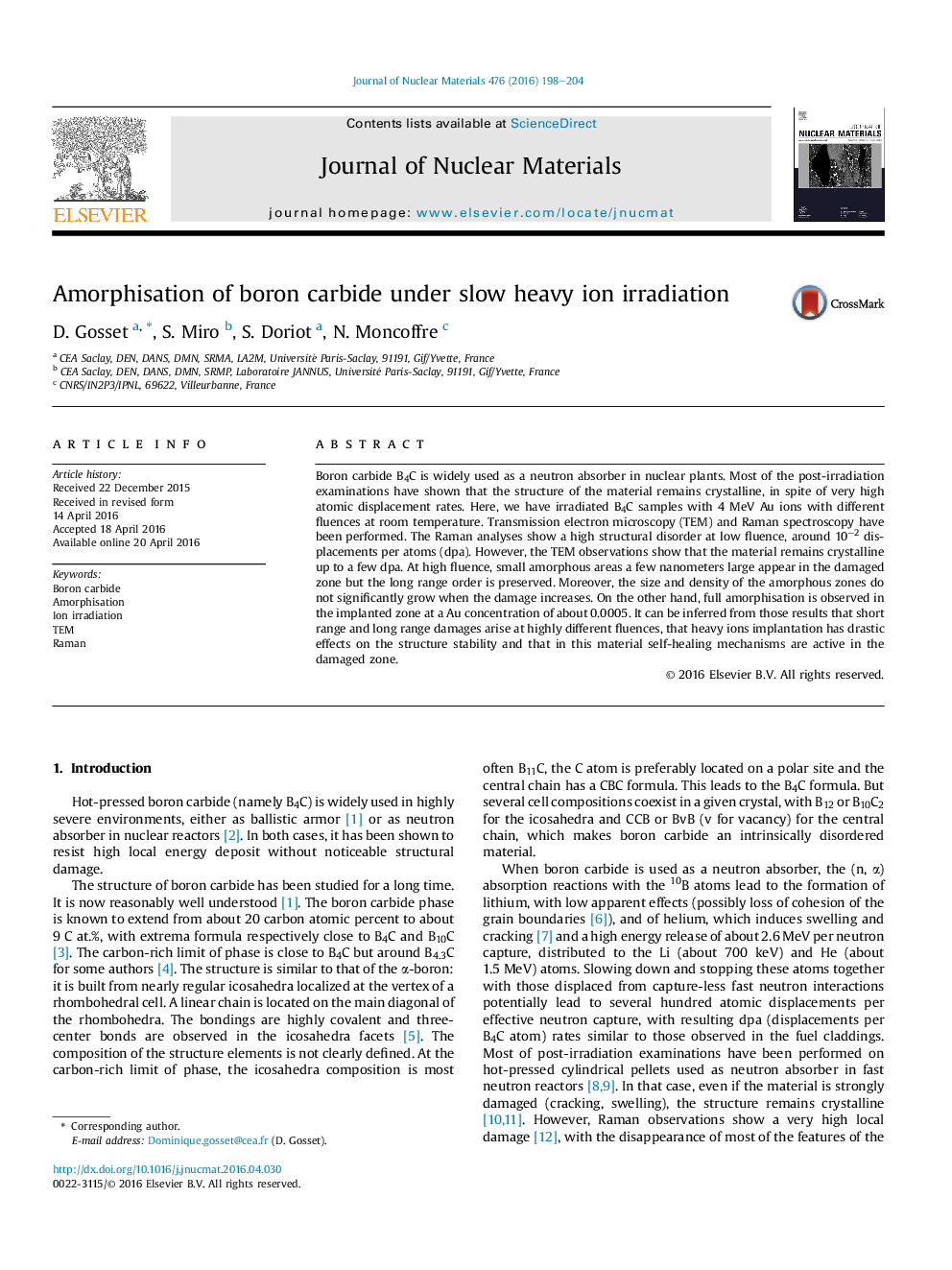| Article ID | Journal | Published Year | Pages | File Type |
|---|---|---|---|---|
| 1564673 | Journal of Nuclear Materials | 2016 | 7 Pages |
Abstract
Boron carbide B4C is widely used as a neutron absorber in nuclear plants. Most of the post-irradiation examinations have shown that the structure of the material remains crystalline, in spite of very high atomic displacement rates. Here, we have irradiated B4C samples with 4Â MeV Au ions with different fluences at room temperature. Transmission electron microscopy (TEM) and Raman spectroscopy have been performed. The Raman analyses show a high structural disorder at low fluence, around 10â2 displacements per atoms (dpa). However, the TEM observations show that the material remains crystalline up to a few dpa. At high fluence, small amorphous areas a few nanometers large appear in the damaged zone but the long range order is preserved. Moreover, the size and density of the amorphous zones do not significantly grow when the damage increases. On the other hand, full amorphisation is observed in the implanted zone at a Au concentration of about 0.0005. It can be inferred from those results that short range and long range damages arise at highly different fluences, that heavy ions implantation has drastic effects on the structure stability and that in this material self-healing mechanisms are active in the damaged zone.
Related Topics
Physical Sciences and Engineering
Energy
Nuclear Energy and Engineering
Authors
D. Gosset, S. Miro, S. Doriot, N. Moncoffre,
